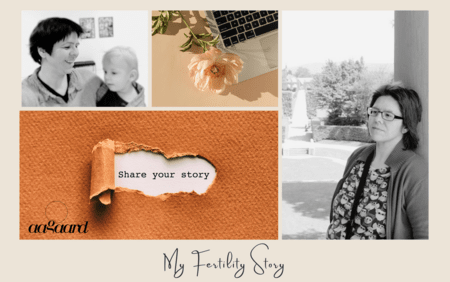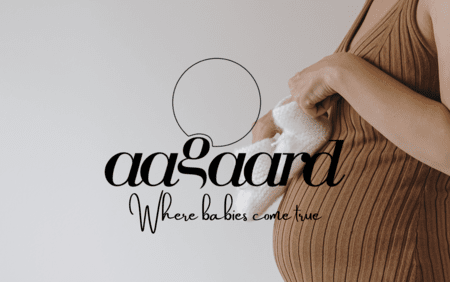
How it all started
Why we needed treatment and the search for the right clinic in Denmark.
By Daniela Walch, a former German patient at Aagaard Fertility Clinic. Part 1 of 3.
A paid cooperation between Daniela Walch and Aagaard Fertility Clinic.
Getting pregnant was harder than expected
Like so many couples, my partner and I wanted to start a family and have one or two children. But what initially felt like the most natural thing in the world turned out to be difficult. Every month we were disappointed anew, I just did not get pregnant. After some time, we finally ventured to a fertility clinic, where various things were examined. But the spermiogram, hormones and uterus were completely normal, and the doctors couldn't find an explanation as to why I wasn't getting pregnant.
Assisted fertilization was not a solution
We started with assisted fertilization, first two IVFs and then ICSIs - and now the doctors realized why I wasn't getting pregnant. Several problems came together: I was low responder, meaning my body wasn't producing many eggs. More than half of the eggs were then defective, the cell envelope was not properly formed and collapsed when touched. If we did manage to produce a blastocyst, it was of poor quality, i.e. the chances of implantation were low. During the entire treatment period in Germany, a dozen assisted fertilizations, I did not become pregnant.
Indication for egg donation
With the indication, I was a clear candidate for egg donation. However, egg donation is prohibited in Germany and doctors are not allowed to assist in such treatment. The doctors had nothing to offer me apart from perseverance. Worse still, they didn't even tell me that egg donation was a possible solution. And due to a lack of alternatives, we continued to have ICSIs with our own eggs, with all the strain on my body, soul and wallet.
It was only a second opinion that told me in no uncertain terms that I should think about egg donation. And that's what we did. For months, sometimes with specialist advice, until we realized that this was a viable option for us.
Searching for the country for the donation
Through counseling with specialists in donogenic gamete donation, i.e. family formation with the help of third parties, we realized that we wanted the donation to be open, so that a potential child would have the opportunity to get to know the donor later and research his or her genetic origins. Open donation is possible in some countries in Europe. As Finland and the UK were too far away for us, we concentrated on Austria, the Netherlands and Denmark and contacted various clinics. In terms of legislation, transport connection and the availability of donors, Denmark emerged as our favorite.
Visit to Aagaard
We visited the Aagaard Clinic to get a personal impression. We had a conversation with the patient coordinator and the head doctor. And it immediately felt right for us: the Danish doctors are warm and professional at the same time. We knew we were in good hands, both emotionally and medically. At the Aagaard Clinic in Denmark, the whole package was right for us.
Donors at Aagaard
The Aagaard Clinic had enough open donors and also offered a so-called extended profile, where the recipients receive children's photos and/or letters from the donors. This was very important to us, because more relevant to us than the donor's appearance were her inner qualities, character, inclinations and hobbies. Of course, we couldn't wish for a character, but the extended profile simply made the donor tangible for us as a person and that made a big emotional difference.
The waiting time at the time was around four to six months and that was okay for us. In Denmark, egg banks are not allowed, the donor has to stimulate again for each donation and the eggs then belong exclusively to one couple or one recipient. As the donors are on average quite young, there is a good chance that a couple will receive two or three blastocysts (i.e. fertilized and further developed eggs), which increases the chance of having a baby or even a sibling.
Further plus points with Aagaard
Another plus point was that there were no hidden costs. The Aagaard clinic told us a price, and this included everything that was involved in the treatment. So, we knew exactly what we were in for. The long journey to Aarhus was difficult for us. We live in the south of Germany, so Denmark is very far away and we would always have to stay overnight. However, there are two hotels within walking distance of the clinic. And because the Aagaard Clinic always carries out a cryotransfer, the transfer date can be planned to suit us, for example on a Saturday morning.
By Daniela Walch. Part 1 of 3. Read part 2 here.
